Toyota Camry AWD Vs Kia K5 AWD Comparison

The market’s ongoing obsession with crossovers has forced an interesting evolution of the mid-size sedan.
Take these two cars here: the all-wheel drive versions of both the Toyota Camry and new Kia K5. The Camry used to be the punchline of automotive jokes, an appliance for those who saw driving as a necessary evil. When the current model arrived in 2018, it ushered in dramatic new looks, with underpinnings that even seemed to relish the occasional back-road jaunt—especially in fun, affordable TRD trim. A move to the Toyota New Global Architecture (TNGA) platform also allowed for the addition of all-wheel drive, providing an added level of security for sedan hold-outs.
Get a Quote on a New Toyota Camry or Kia K5Over at Kia, the K5 debuted this year as the replacement for the Optima. The brand has done its homework, closely mirroring the best-selling Camry’s available features. It marries handsome styling to available AWD, a torquey turbocharged engine, and even a hi-po GT trim to fight off the TRD Camry. Kia’s traditional value approach is at play here, too.
So which of these fine four-doors should you spend your hard-earned on? Read on for all the answers.
Interior and Cargo Space
Camry: The Camry’s interior is a warm hug from a friend, familiar and welcome in the biting cold of winter. TNGA vehicles all have a similar feeling from the driver’s seat, and the Camry is no different. It’s a cinch to get comfortable in, with eight-way power-adjustable seating and lots of room in all directions. The front passenger can also enjoy powered adjustments, though not with the side bolsters. Seating surfaces in this XSE trim tester are real leather, but only the front row gets heated thrones. The heated steering wheel proved clutch during a particularly cold week of testing—though I wish it was quicker to heat up.
The Camry’s interior design is inoffensive, and Toyota did little to switch it up with the 2021 mild facelift. The asymmetric dash design remains, now with a larger “floating” infotainment screen (more on that in the next section). The physical controls for the climate control are easy to see and reach. Beyond some low-rent pieces of plastic on the door cards, material quality is solid.
Headroom is practically the same no matter where you sit: 37.5 inches (953 mm) up front, and 35.6 inches (955 mm) in back. Both cars feature panoramic moonroofs, but it’s the Camry’s that stretches further back. It lends the rear a greater sense of space, where the Camry wins on headroom and legroom (the latter is 38.0 inches, or 965 mm). At 57.7 inches (1,466 mm) and 55.7 inches (1,415 mm), the Camry gives away 0.3 (7 mm) inches of shoulder room in both rows to the K5.
Pop the trunk and there’s 15.1 cubic feet (428 liters) of storage space, with the option to drop the 60/40 rear seats for longer items.
K5: Kia positions this GT-Line tester as the penultimate step on the K5 ladder in Canada, so it comes with more kit than the Camry. The heated front seats and steering wheel are good, and the K5 adds in ventilation up front and heating for the outboard rear seats. Speaking of seating, its front perches offer more lateral support, and a less tapered seat base, making them more accommodating. They may be synthetic leather, but there’s no telling them apart from the real former cow in the Camry. A memory function, unavailable on the Toyota, is a boon for multiple-driver households. Kia quotes an enormous 46 inches (1,170 mm) of front legroom, which goes some way to explaining why its rear seats offer just 35.2 inches (895 mm). Neither of us would call the K5’s rear row “tight”, but it is noticeably less spacious than the Camry. Compounding that is a flatter, more bench-like seating surface.
SEE ALSO: 2021 Kia K5 GT-Line AWD Review: A Covetable Mainstream Sedan?The newer K5’s interior design is fresh and inviting, with a wrap-around strip of matte wood giving it a more premium feel than the Toyota. There’s lots of storage space for knicks and knacks, and the little mail slot for the wireless charger is our favorite approach of them all. Kshitij calls out the vertical track seek buttons on the steering wheel: they should be horizontal.
Out back, the Kia just out-points the Camry with 15.3 cubic feet (434 liters) of trunk space. It also has a 60/40 split rear bench.
Bottom Line: In terms of comfort, we’re split: the Camry’s rear row is the more comfortable option, but the Kia offers the additional (rear) heating and (front) ventilation. Both of us prefer the Kia’s interior design though, which feels just that bit more premium and practical. First point goes to the K5.
Tech and Features
Camry: As mentioned above, the Camry saw a refresh for this year, with higher trims getting the larger 9.0-inch infotainment touchscreen seen here. It’s not a particularly bright screen however, and it runs the same old Entune system we’ve seen in Toyotas for years now. It ain’t pretty, nor is it very speedy, but it’s easy to navigate. Wired Apple and Android phone mirroring are standard. A wireless charger is also standard on the XSE and XLE trims. Sorry, back-seat riders: the only two USB ports are up front.
SEE ALSO: 2020 Toyota Camry TRD ReviewThere’s no fancy digital instrument panel here, but Toyota’s analog dials are super legible, and the red ring adds a dash of sportiness. The larger 7.0-inch infotainment screen between the dials is easy to read and operate, too. It’s standard on every AWD model, and shows up on front-drive XSEs on up. The six-speaker audio system is perfectly acceptable.
K5: Right from the first interaction, it’s clear the Kia’s infotainment system is the superior choice. UVO is snappy, and the wide 10.25-inch setup allows for smartphone mirroring plus another section for things like navigation. Curiously, lesser models with the smaller screen can do wireless Apple CarPlay and Android Auto, but the larger one still needs the leash. Our only real criticism of the system is the occasionally hard-to-read nature of the font. The nixie tube display of the audio is also an acquired taste.
The K5 uses a smaller 4.2-inch LCD between the gauges, making it harder to read than the item in the Camry. Like the Toyota, the Kia packs a six-speaker sound system, which gets the job done. More importantly, the Kia includes another pair of USB ports in the back for charging.
Bottom Line: There’s something to be said for Entune’s plain ease of use, no doubt. But Kia doesn’t give up any of the functionality, with a screen that’s more responsive and easier on the eyes. Back-seat riders will also enjoy the rear USB ports—though it’s strange both cars don’t include USB-C. It’s worth noting the Camry and K5 feature head-up displays with the more powerful engine options, too. It’s 2-0 for the new Kia on the block.
Powertrain, Driving Feel, and Fuel Economy
Camry: Picking all-wheel drive locks Camry buyers out of the V6, leaving the 2.5-liter inline-four. In XSE trim it picks up three more horsepower than the rest of the lineup, totalling 205 hp. Torque is rated at 185 lb-ft max, though the Toyota needs 4,600 rpm showing on the tach to produce that. Seems like it’d be the more strained drive around town, right?
SEE ALSO: Toyota Camry vs Honda Accord: Which Sedan is Right For You?Nope. The lack of turbocharging and a more responsive go-pedal means the Camry is in its element in the city. An eight-speed auto handles shifting duties without fault, even when it needs to kick down a few gears for highway on-ramps. “Overtakes require a heavy right foot,” chimes Kshitij. Steering feel is predictably light, but accurate and consistent.
The Camry is the softer riding of the two. Passengers will appreciate the suppleness, and while it leans more in turns, it builds more confidence than the K5. The Toyota can send up to 50 percent power to the rear when needed—like the slippery fresh snowfall the last night we had it. The shuffling of power is imperceptible from within: the Camry just finds grip and moves, especially with the 19-inch winter tires on our tester.
Toyota quotes fuel economy figures for the 2021 Camry XSE AWD at 25 mpg city, 34 mpg highway, and 28 mpg combined. Canadian figures are 9.5/7.0/8.4 L/100 km, respectively. A 14.4-gallon (55 L) fuel tank suggests a combined range of a little over 400 miles (650 km). During the week, which saw much colder weather and a fair bit of snow, we averaged a little over 26 mpg (9.0 L/100 km).
K5: In America, AWD is optional on most K5 trims. North of the border, all-paw power is standard on every K5 except the performance-oriented GT. That top trim is the only not to use the 1.6-liter, turbocharged engine found here. It’s a very familiar Hyundai group unit, producing 180 hp and 195 lb-ft of torque. An eight-speed auto is standard here, too.
SEE ALSO: 2021 Kia Sorento Review: First DriveDon’t let the existence of a turbo fool you: the Kia’s engine is the more laidback of the two, needing more prodding to really get going. “In most modern cars you need to be careful not to exceed the speed limit,” says Kshitij, “in the K5 you need to be conscious to match it.” Lackadaisical throttle response means you really need to dig deep to get the most from the turbo four-pot.
The Kia rides with just a little more stiffness than the Toyota, but nothing that would be considered uncomfortable by passengers. It strikes a fine balance. The steering is just as light here, though both of us prefer the Camry’s helm. Kia uses an electro-hydraulic system to disengage rear drive when not needed as well, with smooth transitions in low-grip situations.
The K5 just pips the Toyota with on-paper fuel economy, with 26/34/29 mpg ratings from the EPA, respectively. Canuck figures are 9.2/6.9/8.2 L/100 km. It was thirstier with us however, averaging just shy of 23 mpg (10.3 L/100 km). Spot comparisons suggest it’s city driving that pushed up the K5’s average. A slightly larger 15.8-gallon (59.8 L) fuel tank gives the K5 a hypothetical range of 458 miles (737 km).
Bottom Line: The Camry is on the scoreboard—we’re as surprised as you are. A more predictable engine, better fuel efficiency, and a more passenger-friendly ride gives it the edge over the newer K5.
Safety
Camry: Toyota updated its Safety Sense system to 2.5+ for the 2021 Camry, which includes lane departure with steering assist, lane-tracing, automatic high beams, and—on the XSE and XLE trims—full-speed range dynamic cruise control. Automated emergency braking is also standard, with both pedestrian and cyclist detection. Blind-spot monitoring with rear cross-traffic alert is also available on higher trims, and present here.
The Camry scores a Top Safety Pick+ rating from the Insurance Institute for Highway Safety (IIHS), the organization’s top honor. The National Highway Traffic Safety Association gave Toyota’s mid-sizer a perfect five stars in every one of its crash and rollover tests.
K5: The K5 features its own comprehensive suite of safety assists, dubbed Drive Wise, including lane follow and keep assists, blind-spot monitoring, rear cross-traffic alert, automatic high beams, and dynamic cruise control. Highway Driving Assist bolsters the latter, keeping the K5 in its lane, at the desired speed and distance from other cars. Kia also includes a driver alert system, which notifies drivers of lead cars pulling away from lights; and Safe Exit Assist, which can automatically lock doors while parked on the side of the road if it senses an incoming car.
SEE ALSO: 2019 Nissan Altima vs Honda Accord ComparisonLike the Camry, the K5 scores a Top Safety Pick+ from the IIHS. It manages only an “Acceptable” for its LATCH setup though, not the “Good” of the Camry. The K5’s headlight score is very dependent on trim and build date, too. Kia does nearly as well from the NHTSA: overall the K5 rates five stars, with four stars for front passenger side crash and rollover risk.
Bottom Line: It’s close, but facts are facts: the Camry wins.
Styling
Camry: “Looks like a mid-size sedan,” is all Kshitij can say of the Camry. It’s certainly more expressive than previous generations, but the segment is now full of super-stylish four-doors. We like the 19-inch wheels and Toyota’s Supersonic Red. We’re less enamored with the quad exhaust tips; surely, at 205 horsepower, that’s the worst ponies-to-tips ratio on the market?
K5: Kia has been killing it design-wise for years now, and the K5 is its latest win. The sportback-style rear treatment makes it look expensive. The low nose with the integrated headlights is mean, and those yellow “heartbeat” DRLs aren’t just incredibly stylish, they make it easy to ID the K5 from across a lot. If we wanted to nitpick, the varying width of the chrome strip running along the roofline is a little awkward. That’s not enough to detract from an incredibly pretty shape, mind you.
Bottom Line: The K5 looks fantastic—we’d go so far as to call it the most handsome car in the class. Looks are subjective and all that, but still, Kia.
Pricing
Camry: The Camry range kicks off with the front-drive LE at $25,965 (29,020 CAD), including destination. You’ll need $1,400 ($1,800) to add AWD to the XSE trim. A hybrid—not an option on the K5—starts at $28,265 ($32,560). Our XSE AWD tester sits near the higher end of the model walk, ringing in at $34,750 ($39,215) so equipped. A top-trim V6 goes for a few grand more.
K5: Putting the stylish Kia in your driveway starts at $24,585 in the US for a front-drive LX, including destination. The Canadian market works differently, with standard AWD bumping the asking price to $31,345 CAD. Another unique change between the two countries: if you want the 10.25-inch touchscreen, HDA, and navigation in our GT-Line tester, you’ll need to opt for the $800 AWD Special Edition Package in America, which locks you to Wolf Gray paint and a red interior. Equipped as such, the K5 GT-Line AWD comes in at $31,430—our tester is $37,995 CAD. A loaded GT adds around $4,000 on either side of the border.
SEE ALSO: 2019 Honda Accord Touring Pros and ConsBottom Line: The K5 comprehensively undercuts the Toyota, yet offers more standard features. That’s a big win for Kia—and value-conscious buyers.
Verdict: Toyota Camry AWD vs Kia K5 AWD Comparison
Both of these cars are excellent alternatives to the ubiquitous compact crossovers. They offer the added all-weather security of AWD—just remember those snow tires in winter—come packed with tech and safety kit, and look pretty darn good, too.
As we found out here, the Camry remains the class measuring stick for a reason: it does everything well. The Toyota was our preferred driver, and its simpler engine did better at the pumps. Back-seat space is slightly better in the Camry, and hooking up a child seat is easier, too. We can’t ignore the long-standing reputation for reliability, either.
Not that the Kia doesn’t run the Toyota close in every one of those categories, though. It has the vastly better interior and infotainment system, as well. Beyond that, buying a sedan in this day and age is a statement, and few come more bold than the K5. Kia has produced a super-stylish four-door with a cabin to match, undercutting the competition and still offering one of the best warranties in the business. It’s our pick in this match-up.
Become an AutoGuide insider. Get the latest from the automotive world first by subscribing to our newsletter here.

Kyle began his automotive obsession before he even started school, courtesy of a remote control Porsche and various LEGO sets. He later studied advertising and graphic design at Humber College, which led him to writing about cars (both real and digital). He is now a proud member of the Automobile Journalists Association of Canada (AJAC), where he was the Journalist of the Year runner-up for 2021.
More by Kyle Patrick




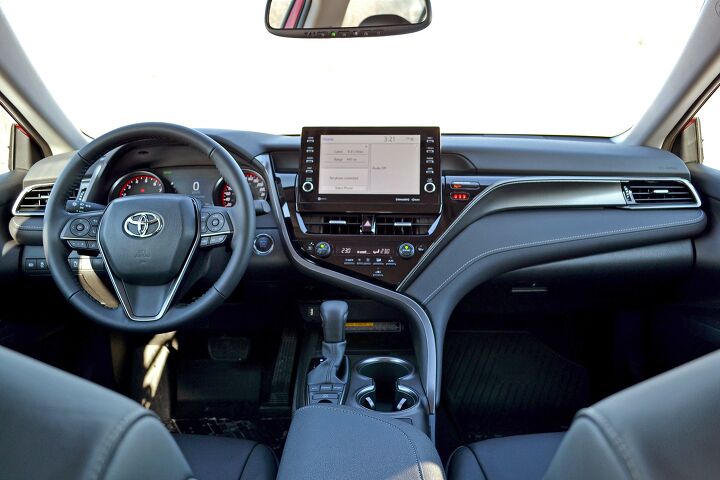
































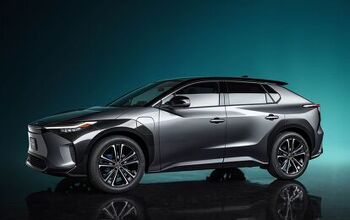
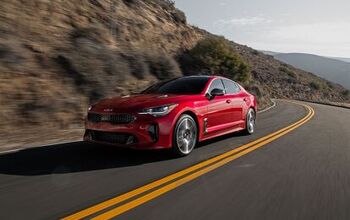
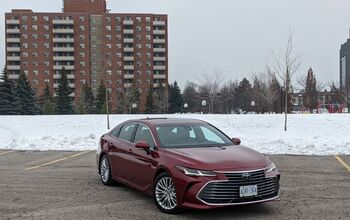
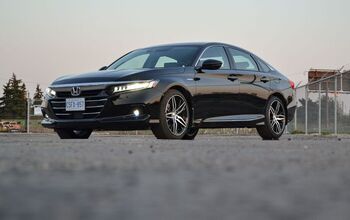

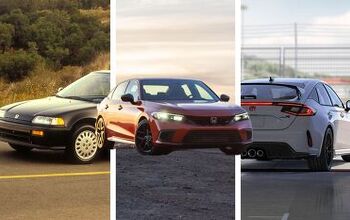


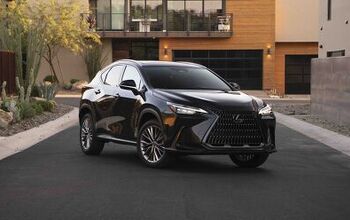


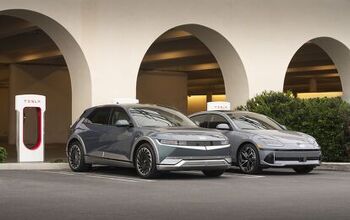


Comments
Join the conversation